Medical expert of the article
New publications
Carotid stenosis
Last reviewed: 04.07.2025

All iLive content is medically reviewed or fact checked to ensure as much factual accuracy as possible.
We have strict sourcing guidelines and only link to reputable media sites, academic research institutions and, whenever possible, medically peer reviewed studies. Note that the numbers in parentheses ([1], [2], etc.) are clickable links to these studies.
If you feel that any of our content is inaccurate, out-of-date, or otherwise questionable, please select it and press Ctrl + Enter.
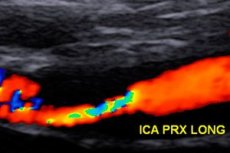
Causes carotid stenosis
Among the main causes and risk factors for the development of carotid artery stenosis, angiologists name:
- Hereditary factor (if atherosclerosis has been detected in family members, then their immediate relatives may develop carotid artery stenosis).
- Old age – as a rule, this disease is more common in people over 70 years of age.
- Gender - usually carotid artery stenosis develops more often in women.
- Hypertension.
- Nicotine addiction.
- Diabetes mellitus type 1 or 2.
- Hypodynamia.
- Improper nutrition
- Excess weight is a metabolic disorder.
Symptoms carotid stenosis
There are no specific signs for this disease, but there are a number of signs that may indicate mini-strokes or TIAs:
- A rapid and sudden deterioration in visual acuity. This can affect one or both eyes at once.
- Numbness on one side of the face. Weakness in the arms and legs on one side may occur.
- A person may not understand what others are saying to him. His speech becomes incoherent and difficult to understand.
- Impaired coordination of movements.
- Confusion, vertigo.
- Difficulty swallowing.
Stenosis of the internal, common, right or left internal carotid artery develops in most cases due to an atherosclerotic plaque, hypercholesterolemia.
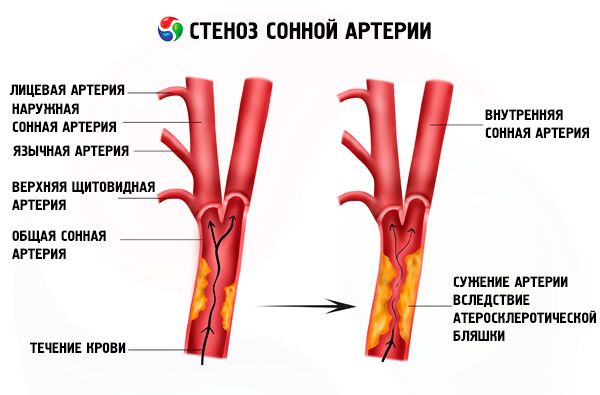
Often, atherosclerotic plaques in this location can lead to the development of ischemic stroke and corresponding symptoms: numbness of the extremities, face, dizziness, headaches.
Diagnostics carotid stenosis
The following diagnostic methods are used to diagnose carotid artery stenosis:
- Ultrasound is a test that helps examine the carotid arteries for narrowing.
- The antigraphy method is an invasive examination that is performed by inserting a special catheter into an artery in the arm or leg. A special contrast agent is then injected through it and a series of X-rays are taken. This method helps not only to see where the artery has narrowed, but also to carefully examine all the details of the lesion.
- MRA – a scan of the carotid arteries is performed using a contrast agent. Magnetic resonance angiography allows the radiologist to obtain more information about the narrowing.
- CT – this method is used only if there is a risk of developing ischemic stroke or transient ischemic attacks.
What do need to examine?
Who to contact?
Treatment carotid stenosis
First of all, the patient should completely change his usual way of life. It is necessary to give up smoking, alcohol abuse, control the level of cholesterol in the blood with the help of a hypocholesterolemic diet.
Medications are also prescribed. The most popular among them are antiplatelet agents. These agents help reduce the risk of complications such as myocardial infarction and stroke. Most often, patients are prescribed acetylsalicylic acid, clopidogrel, and dipyridamole. Anticoagulant drugs, such as Warfarin, are also prescribed.
Carotid artery stenosis surgery
Carotid endarterectomy is usually the treatment of choice for atherosclerotic carotid stenosis. It is only performed on patients with carotid stenosis levels greater than 50%.
During the surgery, the vascular surgeon makes a small incision in the neck and removes thrombotic accumulations and atherosclerotic plaques. Then the artery is stitched and sutured.
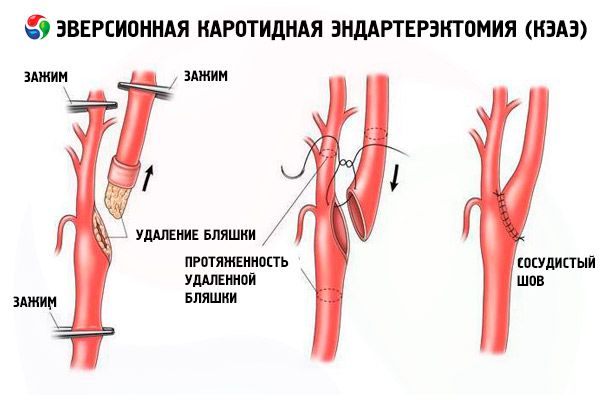
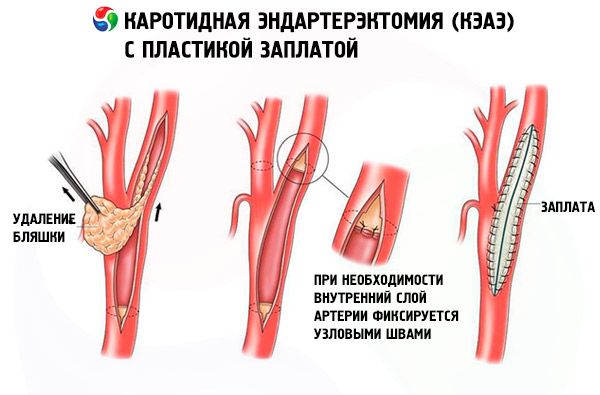
Stenting is a procedure of placing a stent (a metal tube with a honeycomb structure) into a part of the carotid artery that has narrowed due to atherosclerosis.
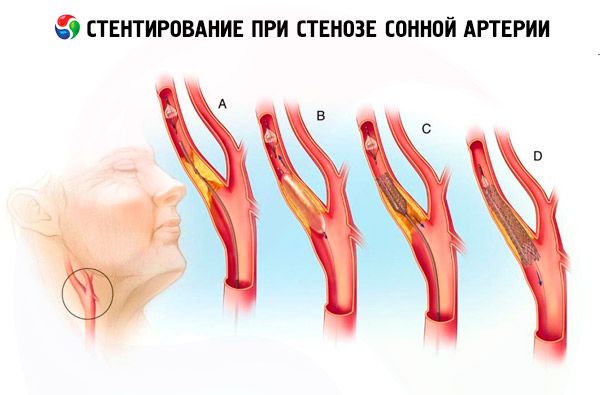
Inside the artery, the stent gradually opens, pushing apart the narrowed area and restoring the lumen, improving blood supply and oxygenation of the brain. The patient is usually discharged home 1-3 days after the stenting procedure.


 [
[